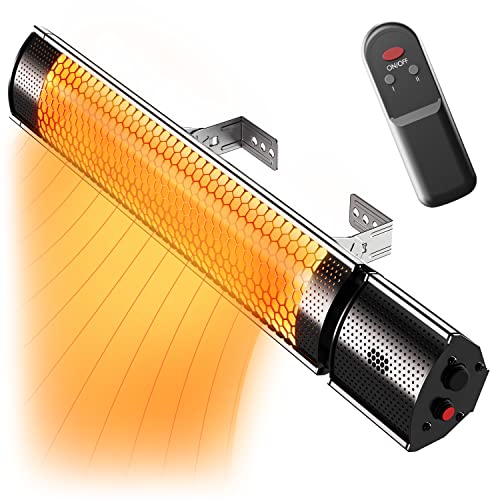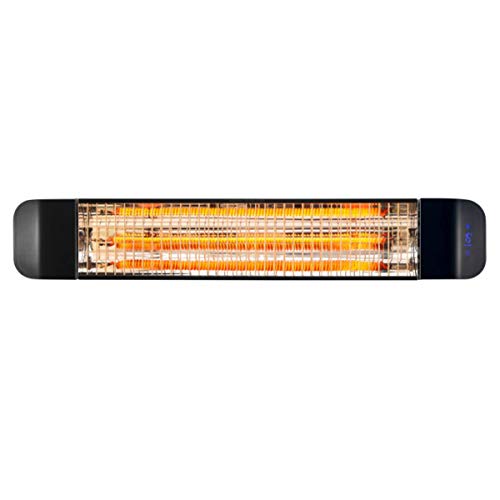Guide To Best Patio Heater Gas: The Intermediate Guide For Best Patio …
페이지 정보

본문
 How the Best Patio Heater Gas - Https://Www.Buzzbii.Com/Post/1870000_Https-Www-Fireplacesandstoves-Uk-Categories-Patio-Heaters-Why-Choose-A-Gas-Patio.Html, Can Help You Extend Your Outdoor Entertaining Season
How the Best Patio Heater Gas - Https://Www.Buzzbii.Com/Post/1870000_Https-Www-Fireplacesandstoves-Uk-Categories-Patio-Heaters-Why-Choose-A-Gas-Patio.Html, Can Help You Extend Your Outdoor Entertaining Season The best patio heater gas can help extend the time of your outdoor gathering. These elegant, powerful heaters can are capable of heating up to 215 square feet and can be powered by propane or natural gas.
The best patio heater gas can help extend the time of your outdoor gathering. These elegant, powerful heaters can are capable of heating up to 215 square feet and can be powered by propane or natural gas.Think about a model that has 40,000 Btu and more. This will warm a medium-sized patio. Take into consideration safety features like tilt switches and security belts for the tank.
Cost to run
A patio heater requires a lot of fuel to produce the heat that it releases. The amount of gas used varies according to the model and the heat setting, but in general you can expect a patio heater to use approximately 2 pounds of propane an hour at the highest heat. This is why it's crucial to choose a model with higher BTU rating that will increase the much heat it generates for each pound of propane used.
The best patio heaters for low cost to run are those that are powered by natural or propane gas. These heaters don't require any installation, and only need the use of a small propane tank (usually 20lbs) to run. These heaters are easy to set up and move around on your patio. They also have the lowest running costs since you will not have to refill tanks of propane, but they do not generate the same amount of heat as a wood or electric heater.
Gas-powered patio heaters typically emit an electric flame that is visible, which many buyers find attractive. The flame can also give the impression of a fire and add ambiance to your outdoor space.
Some gas patio heaters can be connected to your home's gas system. This can save you cost of operating. These models do not have to be refilled, but you should be aware when positioning the heater in your backyard since it will be exposed to elements. Some of these models are more expensive than others, however their durability makes them worth the extra cost.
You should consider a coal-powered or wood-pellet patio heater like this model by Solo Stove if you are seeking a patio heater that is low-cost to operate and a low impact on the environment. These heaters might not be as common as propane or gas patio heater regulator patio heaters, but they provide many of the same benefits. This model is powered by conventional wood pellets, which are available at any hardware store and does not require a propane tank. It's portable and can be moved around your patio in a snap however, it also has an easy tip-over shutoff, and comes with an insulated cover that protects it when it's not being used.
BTU Rating
The BTU rating is a measure of the amount of heat generated by a gas Best patio heater. This information can be helpful when deciding on which patio heaters to buy particularly if your budget is limited. A higher BTU rating usually means an energy efficient heater that will produce plenty of heat in a relatively short period of time. When deciding on the right BTU, you should consider the size of your patio as well as the climate. If you have an outdoor space that is large, you may need to purchase a variety of patio heaters to fill the entire area.
In general the case, a propane or natural gas patio heater natural gas heater that produces about 40,000 BTU can comfortably warm up an outdoor space. If you live in a colder climate or have a larger outdoor space, you will need an outdoor heater that has more BTU rating that produces more heat quicker. You can also choose a patio heater that is taller, such as the pyramid or dome model to keep more people warm.
If you're considering natural gas fired patio heaters or propane choose a patio heater that has an easy-to-use pulse ignition system and rotary dial control that allows you to adjust the flame to your preferred setting. Some models have a tip-over shutoff switch that shuts off the gas when the heater is tilted at a 15 degree angle or higher.
You can pick a tabletop or freestanding patio heater depending on the style of your outdoor decor and your personal preferences. If you're interested in traditional design, choose a patio heater that has intricate details and accents of classic colors like hammered bronze or resin Wicker. If you're looking for something more modern or contemporary, go with minimalist, sleek style.
Many patio heaters come in a variety of styles and materials, such as aluminum, stainless steel, faux-stone and glass. You can also choose from a variety of finishes to match your outdoor furniture and other decorative accents. For instance gas patio heaters are available with a choice of brushed stainless steel or weathered copper-colored finish to complement your decor. You can also select a propane or natural-gas patio heater that has infrared lighting to provide a soft light to your space.
Design
A patio heater can be a great way to keep your outdoor area warm. It's important to think about the features and design of a patio heating system before you purchase one. A few key factors to look for include the heat output as well as the ease to use, and if it's safe to have in your home.
Patio heaters provide warmth using infrared rayons. This type of heating works by absorbing light from the sun and then radiating it into air around the heater. This kind of heat is efficient in providing warm air throughout an area since it is a direct method of heating. It does not heat the entire patio. Therefore the size of the area you're trying to heat will affect the efficiency of a patio heater. is.
There are several different types of heaters for patios such as pyramid designs and cylinder shield designs, and even ones with dancing flames. Each style has its own pros and cons, however it's crucial to choose the one that best suits your aesthetic preferences and the dimensions of your patio.
Another thing to take into consideration is the size and weight of the patio heater. If you plan to move the heater around your yard, you may want to choose a lightweight model that is easily moved. Also the height of a patio heater will affect how much heat it generates and how quickly it will reach the desired location.
Many gas patio heaters require expert installation into your gas line, however electric models are much easier to install and are generally more affordable than propane counterparts. They can be mounted on the wall or stand on a table and are usually equipped with height settings that can be adjusted so that you can alter the direction they're directed at.
Before purchasing a patio heater, ensure that it meets the safety standards established by your local government as well as national standards organizations. Matthew Griffith, prevention chief at the Montreal Fire Department says that it is recommended to purchase a patio heater that has an Underwriters Laboratories certification (UL) or Underwriters Labratory of Canada (ULC). These certifications mean that the heater has been tested independently to ensure that it doesn't pose any safety risks to you and your family.
Energy Efficiency
The kind of fuel a patio heater uses has a major impact on its efficiency. Gas-powered models like propane are the most energy efficient as they produce more warmth per pound of fuel. However, they also tend to have a shorter lifespan and are more expensive to replace when the tank runs dry. Electric models, on the other hand, typically use less power and are typically more affordable to run.
Whether you opt for propane gas or a natural model should depend on the dimensions of your outdoor space, existing sources of power, and your preference with regard to the speed of heating and control. Natural gas models require a professional installation, but they offer the benefit of continuous heating and won't require refills. Portable propane models however, are easy to use and can be moved around your patio when needed.
Another consideration is the environmental impact of your new patio heater. Although propane is a more sustainable alternative to gasoline and coal but it's still an oil-based fuel. It is also often sourced through destructive environmental practices, such as fracking or drilling for oil underwater. Natural gas on the other hand is a green alternative to propane and has an additional benefit of lower greenhouse gas emissions.
Infrared patio heating systems do not heat the air directly. Instead, they emit a beam of heat that is absorbed by people and objects. They might take longer to get heated, but they use less energy and emit zero carbon dioxide.
To get the most convenience, look for an outdoor heater that is wireless and remote controlled that can be controlled from a distance. This Bromic model, for example can be turned on and off with an app, or programed to be turned on at a specific time. It is weatherproof and comes with an ETL listing (an international certification agency). It is suitable for use indoors and outdoors. It is an excellent choice for garages as it can be put up on the wall or ceiling, and is powered by a standard 110-volt outlet. It has an integrated timer and three different heating options.
- 이전글Learn More About Double Strollers While Working From The Comfort Of Your Home 24.12.28
- 다음글15 Hot Trends Coming Soon About Double Infant Strollers 24.12.28
댓글목록
등록된 댓글이 없습니다.